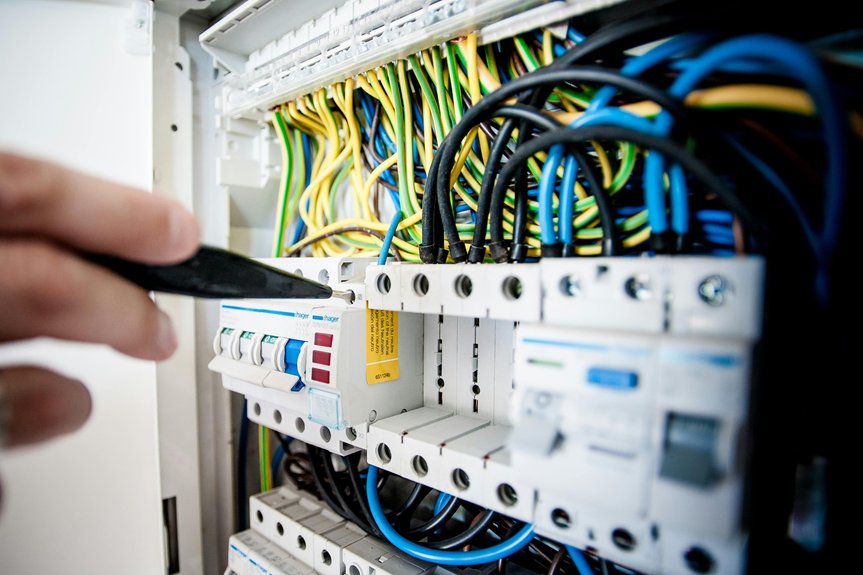Air conditioner repair encompasses resolving common issues such as compressor failures, frozen coils, and blocked filters, which can lead to warm air and reduced system efficiency. The costs of repairs can differ based on the parts required, with repairs for components like capacitors or fan motors generally costing several hundred pounds.
The evolution of smart technology and predictive maintenance is transforming the landscape of HVAC repairs, enhancing their efficiency and convenience. For those interested in deeper insights, understanding how regular maintenance and innovative techniques can lead to significant time and cost savings is essential.
Regular upkeep is vital for ensuring your air conditioning system operates smoothly and efficiently. By addressing minor issues before they escalate, homeowners can avoid more costly repairs down the line. It’s advisable to consult with qualified professionals who can provide tailored advice and services based on your specific needs.
Common Causes of Air Conditioner Malfunctions
Many air conditioner malfunctions can be attributed to a few common causes, with issues such as compressor failure, frozen evaporator coils, and clogged filters being among the most prevalent.
The compressor plays a crucial role by pressurising and circulating refrigerant, which is essential for effective cooling. When the compressor fails, the system may produce warm air, even while running, and this is often accompanied by loud clanking or grinding noises. Additionally, significant spikes in energy usage may indicate a failing compressor motor.
Frozen evaporator coils typically occur when airflow is restricted, often due to dirty filters or an imbalance in refrigerant levels, resulting in diminished cooling and airflow. Clogged filters further restrict airflow, placing additional strain on the system, which can lead to frozen coils.
Regular maintenance, including filter checks and system inspections, is vital for preventing these issues and ensuring your air conditioning unit operates efficiently. Proper airflow is also critical, as poor airflow can contribute to coil freezing and system inefficiency.
Estimating Repair Costs for Different Components
Estimating the cost of repairing an air conditioning unit relies on several factors, particularly the specific component that requires attention.
The repair costs for different parts can vary considerably based on complexity, type, and the age of the system. For instance:
Capacitor Replacement: The costs can vary significantly, particularly in larger and more intricate systems. The average repair cost is about $375, but capacitor replacements typically range from $150 to $400.
Refrigerant Leak Repair: This can be influenced by the severity of the leak and its location within the system. Repairing refrigerant leaks often costs between $300 and $800, depending on the leak’s size and difficulty to access.
Fan Motor Replacement: Generally, the costs can rise, especially in larger systems that may require additional labour. When replacing fan motors, costs can be between $200 and $600, influenced by the motor size and ease of access.
Circuit Board Repair: Prices can fluctuate widely, influenced by the age of the system and local labour rates. The repair or replacement of circuit boards can range from $200 to $1,200, especially for older, discontinued models.
Understanding these potential costs is crucial in deciding whether a repair is a sensible choice or if investing in a replacement might be a more prudent long-term solution. Additionally, parts availability and the age of your system can significantly impact repair expenses. This consideration is essential for ensuring comfort and efficiency in your home.
Trends Shaping the Future of HVAC Repairs
Advances in HVAC technology are significantly transforming the approach to repairs in the United Kingdom. Smart systems equipped with voice commands and mobile applications simplify troubleshooting, while predictive maintenance helps prevent breakdowns before they occur. The integration of these systems with smart home devices facilitates remote management, and data analytics enhance performance, leading to energy savings. These trends create a sense of connection, allowing homeowners to feel more engaged with their heating, ventilation, and air conditioning systems.
| Trend | Benefit | Impact |
|---|---|---|
| Smart HVAC Systems | Easier control and troubleshooting | Reliable and user-friendly |
| Predictive Maintenance | Reduces downtime and costs | More dependable systems |
| Integration with Homes | Remote management | Enhanced convenience and control |
| Data Analytics | Efficiency improvements | Environmentally friendly |
These innovations ensure that HVAC repairs are conducted efficiently, safely, and in alignment with sustainable goals, making them increasingly vital for modern households.
Conclusion
Understanding the common causes of air conditioning issues and the associated costs enables homeowners to prepare effectively for repairs. As technology progresses, HVAC repairs are becoming more efficient and expedient, with emerging trends focused on enhancing reliability and energy efficiency. Keeping abreast of these developments facilitates better maintenance and prompt repairs, potentially resulting in cost savings and prolonging the lifespan of your air conditioning unit.
Regular maintenance remains crucial for ensuring your air conditioner operates smoothly and efficiently for years to come. By prioritising upkeep, you can avoid unexpected breakdowns and maximise the performance of your system.

